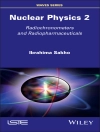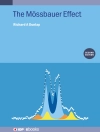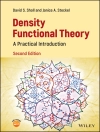Modern electrodynamics in different media is a wide branch of electrodynamics which combines the exact theory of electromagnetic fields in the presence of electric charges and currents with statistical description of these fields in gases, plasmas, liquids and solids; dielectrics, conductors and superconductors. It is widely used in physics and in other natural sciences (such as astrophysics and geophysics, biophysics, ecology and evolution of terrestrial climate), and in various technological applications (radio electronics, technology of artificial materials, laser-based technological processes, propagation of bunches of charges particles, linear and nonlinear electromagnetic waves, etc.). Electrodynamics of matter is based on the exact fundamental (microscopic) electrodynamics but is supplemented with specific descriptions of electromagnetic fields in various media using the methods of statistical physics, quantum mechanics, physics of condensed matter (including theory of superconductivity), physical kinetics and plasma physics.
This book presents in one unique volume a systematic description of the main electrodynamic phenomena in matter:
– A large variety of theoretical approaches used in describing various media
– Numerous important manifestations of electrodynamics in matter (magnetic materials, superconductivity, magnetic hydrodynamics, holography, radiation in crystals, solitons, etc.)
– A description of the applications used in different branches of physics and many other fields of natural sciences
– Describes the whole complexity of electrodynamics in matter including material at different levels.
– Oriented towards 3-4 year bachelors, masters, and Ph D students, as well as lectures, and engineers and scientists working in the field.
– The reader will need a basic knowledge of general physics, higher mathematics, classical mechanics and microscopic (fundamental) electrodynamics at the standard university level
– All examples and problems are described in detail in the text to help the reader learn how to solve problems
– Advanced problems are marked with one asterisk, and the most advanced ones with two asterisks. Some problems are recommended to be solved first, and are are marked by filled dots; they are more general and important or contain results used in other problems.
Mục lục
Introduction
Chapter 1. Equations for static electric and magnetic fields in matter
1.1. Averaging of microscopic Maxwell equations. Vectors of electromagnetic fields in matter
1.2. Electrostatic and magnetostatic equations in matter
1.3. Polarisation of matter in a constant field
1.4. Answers and solutions
Chapter 2. Electrostatic theory of conductors and dielectrics
2.1. Basic concepts and methods of electrostatics
2.2. Special methods of electrostatics
2.3 Energy, forces and thermodynamics of conductors and dielectrics
2.4. Answers and solutions
Chapter 3. Steady currents and magnetic field in media
3.1 Steady currents
3.2. Magnetostatics in media
3.3. Energy, forces and thermodynamics of magnetic media
3.4. Ferromagnetics
3.5. Electrodynamics of superconductors
3.7. Answers and solutions
Chapter 4. Quasi-stationary electromagnetic fields
4.1. Quasi-stationary phenomena in linear conductors
4.2. Eddy currents and skin effect
4.3. Magnetic hydrodynamics
4.4. Answers and solutions
Chapter 5. Equations for electromagnetic field in dispersive media
5.1. Polarization of matter in a non-stationary and inhomogeneous field. Tensor of complex dielectric permeability
5.2. Causality and dispersion relations
5.3. Energy of electromagnetic field in media
5.4. Oscillations in media
5.5. Electrodynamics of moving bodies
5.6. Answers and solutions
Chapter 6. Propagation of electromagnetic waves in media
6.1. Plane waves in isotropic media. Reflection and refraction of waves
6.2. Plane waves in anisotropic and gyrotropic media
6.3. Scattering of electromagnetic waves by macroscopic bodies. Diffraction of waves
6.4. Diffraction of X-rays and gamma quanta in crystals
6.5. Answers and solutions
Chapter 7. Coherent and non-linear optics
7.1. Coherence and interference
7.2. Waves in non-linear media
7.3. Waves in active media
7.4. Waves in stochastic media
7.5. Answers and solutions
Chapter 8. Electromagnetic oscillations in restricted bodies
8.1. Guides of waves and long transmission lines
8.2. Cavity resonators
8.3. Lasers and guides of light
8.4. Answers and solutions
Chapter 9. Interaction of charged particles with equilibrium and non-equilibrium media
9.1. Fast particles in medium. Scattering and radiation
9.2. Cherenkov effect and related phenomena
9.3. Transition scattering and radiation
9.4. Channeling and emission of particles in crystals
9.5. Acceleration of particles in turbulent plasma media
9.6. Answers and solutions
Appendix. Elements of stochastic field theory. Correlation tensors
References
Subject index
Giới thiệu về tác giả
Igor N.Toptygin is Professor at the Theoretical Physics Department in Saint-Petersburg State Polytechnic University, Russia. He received his academic degrees in the field of physics and mathematics in 1964 (Ph D) and 1974 (habilitation). He is an expert in theoretical physics and theoretical astrophysics. He is a member of the Scientific Council on Complex Problem of Cosmic Rays of the Russian Academy of Sciences, and a corresponding member of the International Academy of Sciences for High Education. He has been engaged for many years in theoretical studies of quantum paramagnetic amplifiers, acceleration of cosmic rays, and radiation of relativistic particles in plasmas.












